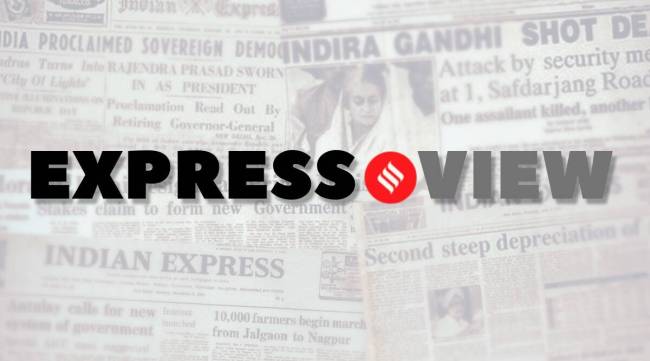Opinion With the easing of inflation, India’s focus should be on growth
The fall in food inflation should nudge the RBI to consider a pause in raising interest rates.
 That said, the evidence on growth slowing is more compelling than on inflation moderating.
That said, the evidence on growth slowing is more compelling than on inflation moderating. A straight reading of the latest consumer price index (CPI) and index of industrial production (IIP) numbers suggests sharp easing of inflation pressures alongside significant loss of economic momentum. Annual CPI inflation fell to 5.88 per cent in November, from the previous month’s 6.77 per cent and below the RBI 6 per cent upper tolerance limit for the first time since December. The IIP contracted 4 per cent year-on-year in October, led by manufacturing (minus 5.6 per cent) and also the sub-sectors that are proxies for consumption and investment activity: Consumer durables (minus 15.3 per cent), non-durables (minus 13.4 per cent) and capital goods (minus 2.3 per cent). Clearly, the pent-up demand that fueled consumption spending post the lifting of Covid-19 restrictions has ebbed. Nor are there signs of a fresh investment cycle, even as exports — which were doing well till September — have entered negative territory on the back of a global slowdown.
That said, the evidence on growth slowing is more compelling than on inflation moderating. The latter’s decline in November had mainly to do with food, which registered a steep dip to 4.67 per cent from 7.01 per cent in October. That, in turn, was courtesy of vegetables and fruits. These recorded inflation of minus 8.08 per cent and 2.62 per cent, basically reflecting a seasonal trend: Winter is when supply of fresh produce, from tomatoes to cole crops and leafy greens, turns plentiful and affordable. Last year, excess rains from September right through January didn’t allow that. This time, the damage from La Niña and an extended monsoon hasn’t been much. That, together with the timely onset of winter, no major availability issues in fertilisers and nearly 15 per cent increase in rabi sowing area so far, augurs well for food inflation. But in both food and fuel, the uncertainties from weather and war make any predictions foolhardy.
What should the policy response be? The RBI can certainly consider a pause in raising interest rates; one of its monetary policy committee members has said as much. The risks to inflation may not have subsided, but concerns over growth and investment — including from transmission of the cumulative 225 basis points hike in policy interest rates — can no longer be ignored. The government, on its part, would do well to re-emphasise fiscal consolidation: Borrowing less and redirecting government expenditures from consumption to investment. With the next Union budget less than two months away, the action should shift from Mint Street to North Block.






